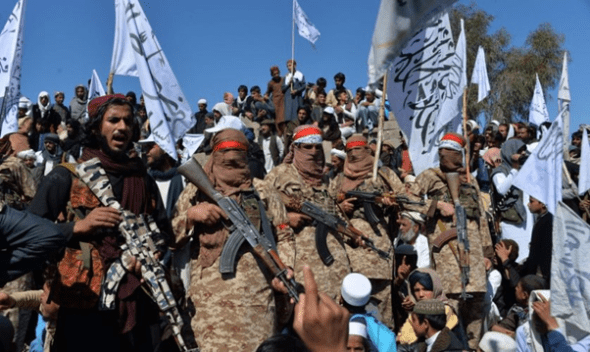
Afghanistan – Executive Summary
The speed of the Taliban’s capture of Afghanistan during August 2021 has been driven in principle by the complete collapse of Afghan security forces. With no meaningful resistance from security forces, the Taliban leadership will likely seek to ensure a peaceful transition of power following negotiations with an ad hoc council representing the now fallen Afghan government, led by politicians that chose to remain in Afghanistan, including former president Hamid Karzai, Abdullah Abdullah, and Gulbaddin Hekmatyar. Taliban fighters are therefore unlikely to meaningfully undermine the ongoing evacuation of foreigners, diplomatic staff, and local Afghans through Hamid Karzai International Airport, which remains controlled by nearly 6,000 US soldiers. Commercial flights however have been significantly limited, triggering thousands of locals seeking to flee the country to amass at the airport. Rioting at the airport – potentially including storming of aircraft – is therefore a high risk, and US forces are likely to use live fire to control crowds. The comprehensive manner of the Taliban’s victory and the Afghan government’s collapse means that the government that assumes power in Afghanistan will overwhelmingly consist of Taliban representatives. This will likely leave the international community, particularly Western nations, with limited leverage over the new administration, leaving the Taliban to pursue its Islamist agenda largely unhindered. This is likely complicate the Taliban’s efforts to gain international recognition, which will largely dictate the economic sustainability of a Taliban-dominated government. In contrast to the Taliban’s previous tenure in power, it appears that the insurgent group has taken power throughout the country, including the northern provinces that had previously been a bastion of resistance to the former Taliban government. It is therefore anticipated limited resistance to the Taliban in the coming months at least as the new government is formed, and the Taliban consolidates its control of the country.
Operational outlook
Insecurity, corruption, and a lack of infrastructure are major obstacles to economic development in Afghanistan. There have been some improvements during the past decade – for example, in telecommunications through the expansion of the mobile network, as well as civil aviation, with a greater number of international carriers flying into Kabul regularly. However, further major improvements to infrastructure are very unlikely over the next year given extremely limited institutional capacity, rampant corruption, and the poor security environment. Officials at all levels of government are likely to demand arbitrary payments to facilitate business activity. There is no organised labour movement in the country given the persistent civil war.
Terrorism
The fall of Afghanistan’s government triggers a transition of the Taliban from a non-state armed group to a governing entity, leading to a significant reduction in terrorism risks, including the threat of sophisticated vehicle-borne improvised explosive device (VBIED) attacks and armed assaults against government and military targets throughout Afghanistan. However, meaningful resistance to the Taliban government from ethnic militias would increase the risk of IED attacks against Taliban assets in northern Afghanistan. Moreover, the Islamic State is likely to continue employing VBIED and ground assaults against domestic and foreign targets under the Taliban government.
Delinquency
Criminal networks in Afghanistan are wealthy and influential, and often overlap with militant elements, creating a complex array of non-state armed groups. Corrupt government and law-enforcement officials take bribes to allow drug traffickers to act with impunity and buying key government positions is commonplace. These systems of political protection enable a small number of key trafficking cartels to control a large proportion of the opium economy. Criminal gangs also engage in kidnapping for ransom, particularly in Kabul.
Following the collapse of the Afghan government and the Taliban’s takeover of power, Afghanistan appears to be transitioning towards a post-conflict scenario. Importantly, influential local and ethnic militia leaders who had previously led opposition to the Taliban, have fled the country. While opposition groups could still mobilise, they would require external assistance to meaningfully challenge the Taliban. Overall, expect limited resistance to the Taliban in the coming months at least as the Taliban consolidates its control of the country. The Taliban’s immediate interest in consolidating power domestically and gaining international recognition reduces the risk of meaningful conflict with neighbours.
Social stability – High
Anti-Taliban protests in urban centres – including Kabul, Herat, Kandahar, Mazar-e-Sharif, Kunduz and Jalalabad – will increasingly take place following the fall of the Afghan government, particularly if the Taliban fail to ensure the provision of basic services. More specifically, Kabul international airport – currently secured and managed by the US military – is likely to be a hotspot for unrest, with thousands of locals seeking to flee Taliban rule amassing at the airport. Rioting at the airport – potentially including storming of aircraft – is therefore a high risk, and US forces are likely to use live fire to control crowds.
Health Risk Afghanistan
Vaccines Required to Enter the Country
Yellow fever: There is no risk of contracting yellow fever in Afghanistan. However, the government of Afghanistan requires proof of vaccination for travellers arriving from countries with a risk of yellow fever transmission. A single dose of YF vaccine is sufficient to confer sustained life-long immunity against the disease.
Vaccines Recommended for All Travellers
Routine vaccinations: Consult your doctor to ensure all routine vaccinations – such as for diphtheria, tetanus, polio, tuberculosis, influenza, measles, mumps, pertussis, rubella, varicella, etc. – are up to date (include booster shots if necessary). NB: you may need to show proof of polio vaccination to exit the country.
Vaccines Recommended for Most Travellers
Hepatitis A: The vaccine is given in two doses, six months apart, and is nearly 100 percent effective. The WHO recommends the vaccine be integrated into national routine immunization schedules for children aged one year or older.
Typhoid fever: The typhoid fever vaccine can be administered via injection (administered in one dose) or orally (four doses). The vaccine is only 50-80 percent effective, so travellers to areas with a risk of exposure to typhoid fever, a bacterial disease, should also take hygienic precautions (e.g. drink only bottled water, avoid undercooked foods, wash hands regularly, etc.). Children can be given the shot beginning at two years of age (six for the oral vaccine).
Vaccines Recommended for Some Travellers
Hepatitis B: The WHO recommends that all infants receive their first dose of vaccine as soon as possible after birth, preferably within 24 hours. The birth dose should be followed by two or three doses to complete the primary series. Routine booster doses are not routinely recommended for any age group.
Malaria: There is currently no malaria vaccine. However, various antimalarial prophylactics are available by prescription and can reduce risk of infection by up to 90 percent. Different medications are prescribed depending on the risk level and the strains of the virus present in the destination. Antimalarial tablets need to be taken throughout the trip to be effective and may need to be taken for as long as four weeks following the trip.
Rabies: The rabies vaccination is typically only recommended for travel to remote areas and if the traveller will be at high risk of exposure (e.g. undertaking activities that will bring them into contact with dogs, cats, bats, or other mammals). The vaccination is administered in three doses over a three-to-four week period. Post exposure prophylaxis is also available and should be administered as soon as possible following contact with an animal suspected of being infected (e.g. bites and scratches).
Natural Risks
Afghanistan is a very mountainous country with a significant risk of earthquakes.
A 7.5-magnitude earthquake hit Badakhshan province (southeast, Pram region) in October 2015, causing over 400 deaths and injuring some 2500 people.
Avalanches and snowstorms are frequent in the winter months and cause dozens of deaths every year. In February 2016, around 200 people were killed in a series of avalanches in the northeast (Salang and Panjshir regions).
Devastating floods and mudslides are also regularly reported; in April 2016, around 50 people were killed following torrential rains and floods in northern Baghlan and Takhar provinces.
Transportation
Transportation infrastructure (by road and air) in the country is severely underdeveloped and travel carries its own inherent risks. The poor state of roads, high crime rates (attacks, extortion, kidnapping, illegal vehicle checkpoints, etc.), and the ever-growing insurrection make highway travel extremely risky in both the countryside as well as on the outskirts of cities. Road travel outside urban areas should only be conducted on a case-by-case basis following an adequate risk assessment. Flying within Afghanistan is not necessarily safe either; Afghan airlines have notoriously lax safety and security standards and none of the domestic companies, including Ariana, Safi, Pamir, and Kam Air, are allowed to operate in European Union airspace for this reason.
Climate
Afghanistan’s climate is continental, with hot and dry summers (35°C to 40°C) and harsh and snowy winters, particularly at high elevations (with temperatures reaching -40°C). Precipitation is the most abundant in the months of March and April.
Afghanistan is a mountainous landlocked country. At the crossroads of Central and South Asia, it is bordered by Pakistan to the east and south, Iran to the west, Turkmenistan, Uzbekistan, and Tajikistan to the north, and China to the northeast.
Population 38.04 million
Main industries small-scale production of textiles, soap, furniture, shoes, fertilizer, apparel, food-products, non-alcoholic beverages, mineral water, cement; handwoven carpets; natural gas, coal, copper. The major industrial crops are cotton, tobacco, castor beans, and sugar beets. Sheep farming. The major sheep product exports are wool and sheep skins.

